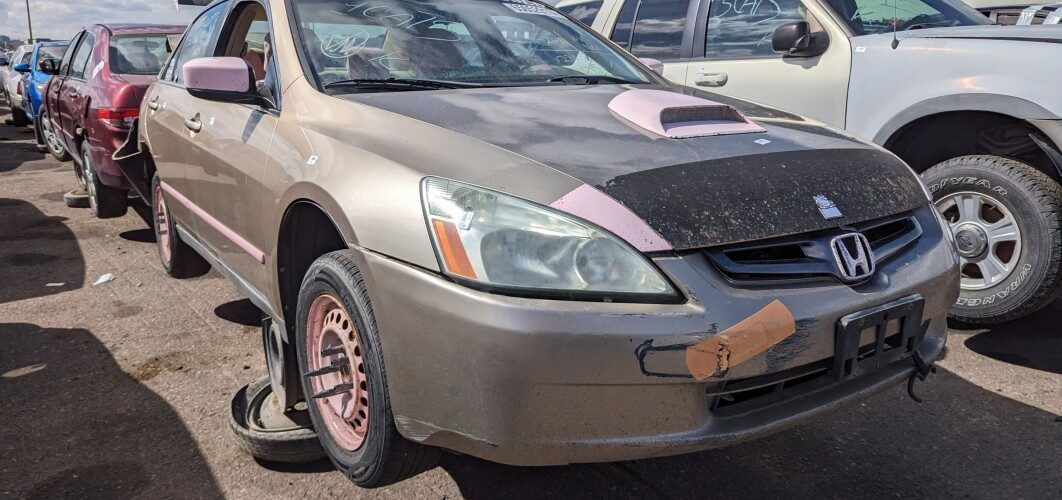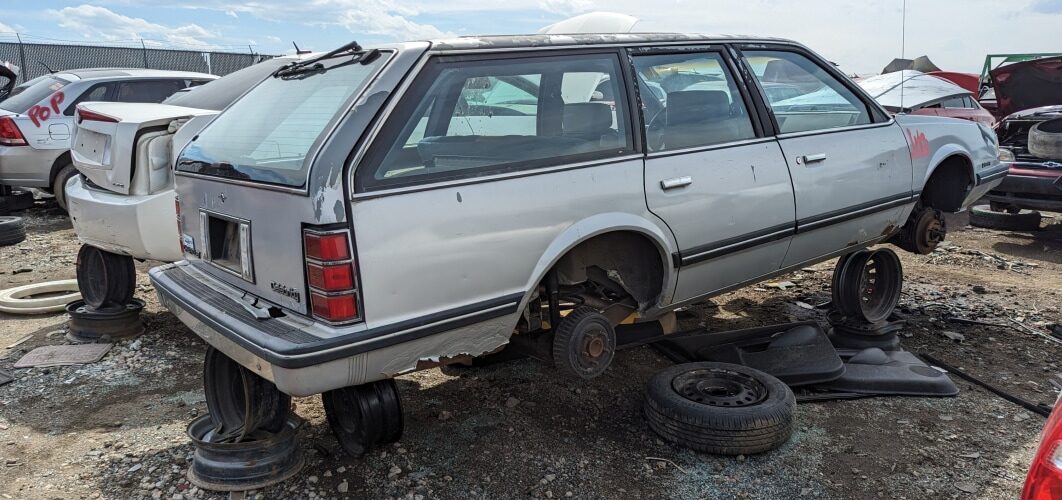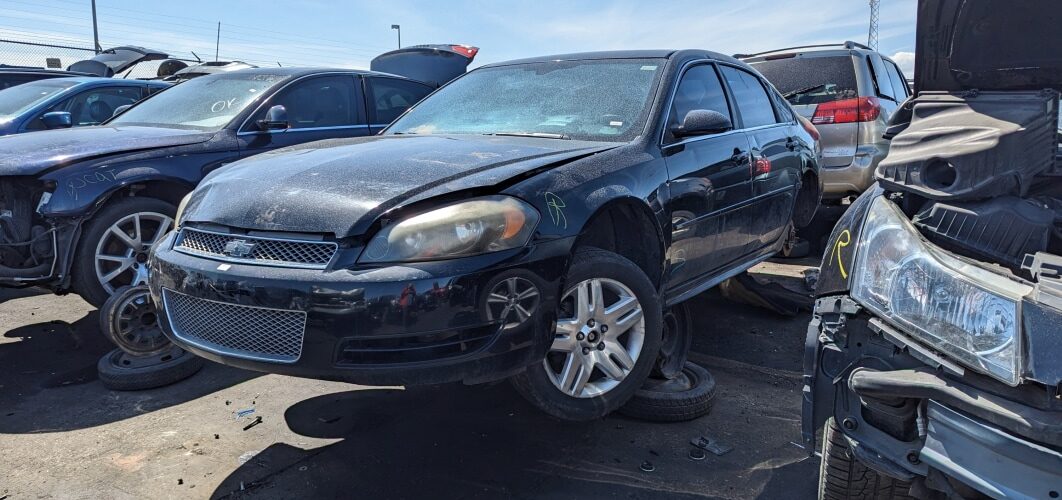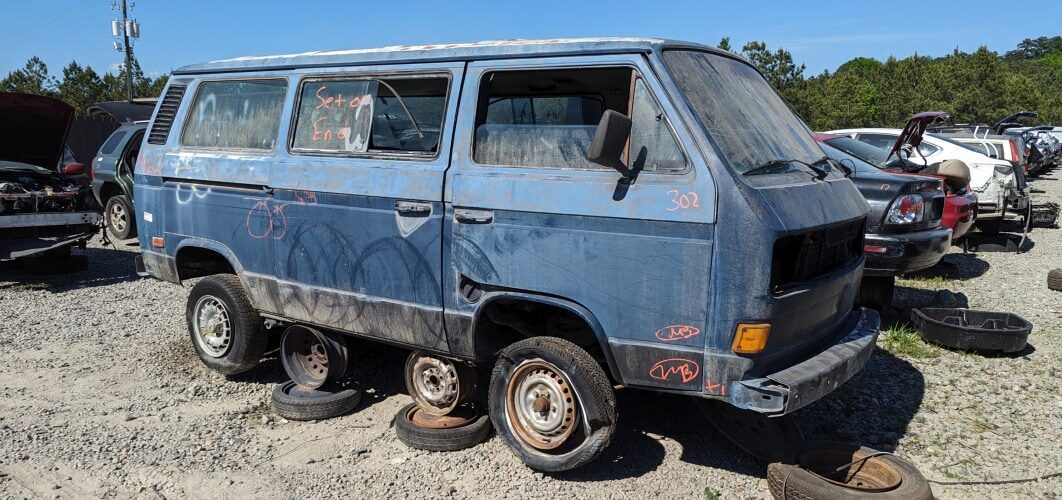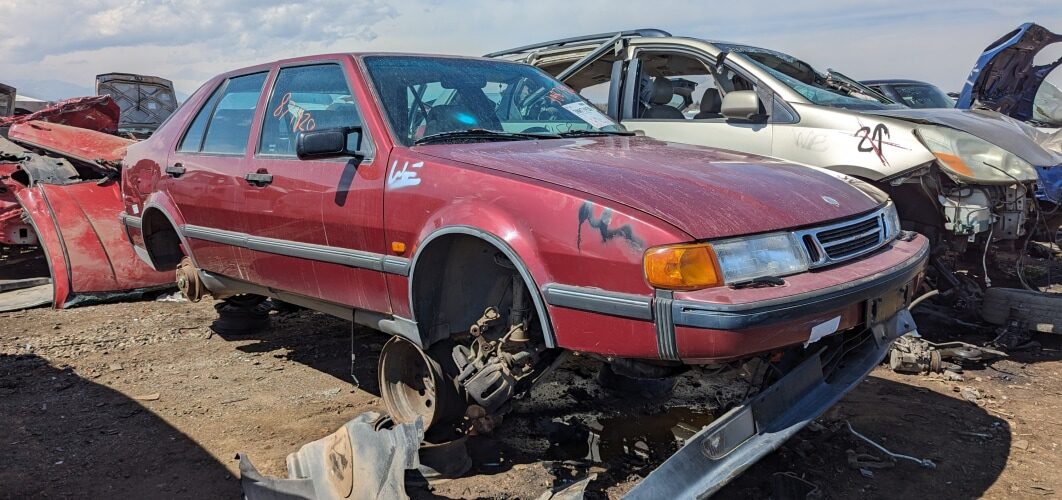The beginning of the end for station wagons arrived as the second half of the 1980s dawned, thanks to Chrysler’s introduction of its game-changing minivans and AMC’s introduction of the even more influential XJ Jeep Cherokee (both as 1984 models), but few noticed at first. At that time, GM’s Chevrolet Division still offered wagons in three different sizes: the Cavalier, Celebrity and Caprice Classic; today’s Junkyard Gem is an example of the middle type, found in a Denver self-service yard recently.

The Celebrity was based on GM’s front-wheel-drive A Platform, which was derived from the X Platform that underpinned the Chevrolet Citation and its kin. It was built from the 1982 through 1990 model years and was a huge success with well over 2 million sold. The Celebrity has all but disappeared from streets and car graveyards by now, so this is a rare opportunity to follow up the base-model ’87 Celebrity sedan we saw a few years ago with a loaded longroof version.

The Celebrity’s near-identical siblings were the Buick Century, Oldsmobile Cutlass Ciera/Cruiser and Pontiac 6000.

I have some personal and not-so-pleasant family experience with the Celebrity. My parents were patriotic Midwesterners who chose Detroit machinery (with a couple of notable exceptions) to drive from the time I was brought home from the hospital in a 1956 Olds 88 after my birth until I was off at college during the middle 1980s. They’d had an unpleasant experience with a 1979 Ford Granada, writing it off to simple bad luck, but then my dad decided to trade in his 1978 Pontiac Bonneville on a new Chevrolet Celebrity Eurosport sedan (above is the only surviving photo of that car, shot past the snout of my now-legendary 1965 Impala sedan). That car was an across-the-board lemon, failing repeatedly under warranty and then even more repeatedly later on, and it drove my parents into the waiting arms of Toyota and Mazda, from which they never returned to Detroit iron.

That said, my family’s Celebrity experience wasn’t universal, and there are still devoted Celebrity enthusiasts to this day. That becomes relevant when telling the tale of today’s Junkyard Gem, because it will lead us to a heartwarming junkyard happy ending.

This car’s interior was just beautiful, leading me to believe that the 43,977 miles showing on its five-digit odometer represented the actual mileage. What a waste of nice interior parts, I thought, but then I remembered that I knew a Celebrity wagon owner!

Yes, the same married couple of Denver-area 24 Hours of Lemons racers who compete with a Chevy Vega and bought a 1990 Dodge Omni for their 16-year-old (because it’s a cool old car that, amazingly, came with a peace-of-mind-providing driver’s-side airbag) picked up a Celebrity station wagon to drive in the Route 66 Lemons Rally last month. Since my tip about a junked 1988 Plymouth Horizon led them to a bonanza of Omni parts, I let them know about the super-clean Celebrity in a nearby boneyard.

As it turned out, they had too many weird hoopties in their stable and had just sold their rally Celebrity to an enthusiast in Iowa who owns several nicely restored Celebrities. He would be flying out to Denver to pick up his wagon and was elated to learn of a nearly-impossible-to-find parts donor in a Mile High junkyard.

After picking up his new ride, he drove the 10 minutes over to U-Pull-&-Pay and harvested all these Celebrity goodies to take home.

As an added bonus, he found the original build sheet under the rear seat and sent a photo. Look at all those expensive options!

As the build sheet states, this car was built at the Oklahoma City plant and then sold new at Osborn Chevrolet on South Havana Street in Aurora (now Celebration Chevrolet at the same location). You can get incredible Korean food in that neighborhood today, by the way.

The base engine in the Celebrity was the 2.5-liter Iron Duke four-cylinder, but this car has the optional high-output 2.8-liter V6 and its 125 horses/160 pound-feet. A 4.3-liter diesel V6 (which was an Oldsmobile design not related to the Chevrolet 4.3-liter V6) was available for the 1985 through 1986 model years, but had been dropped by the time this car was built.

The HO 2.8 got multi-port fuel injection, while the ordinary 112hp 2.8 had a two-barrel carburetor.

For 1986, Celebrity buyers could get a four-on-the-floor manual transmission as base equipment with cars built with Iron Duke or carbureted 2.8 engines (almost none did), but the HO 2.8 cars got this four-speed automatic. Just to confuse matters, the Iron Duked ’86 Celebrity could be purchased with a three-speed automatic.

This AM/FM/cassette radio with auto-reverse and Dolby noise reduction is serious audio hardware for a low-priced American car of the middle 1980s. Celebrity buyers for 1986 got nothing as standard audio equipment, as in the only tunes you’d get in the car were the ones you sang yourself; this unit (which was the second-to-the-top radio option for the 1986 Celebrity) cost a cool $319, or about $909 in 2024 dollars. You really needed it, however, if you wanted to do justice to the hits of the era.

Junkyard employees generally don’t have time to futz with malfunctioning GM hood latches when it comes time to yank the battery and drain all the fluids, so they’ll take this kind of drastic prybar action to open a hood quickly. That’s a shame, because this car’s body was in good shape when it arrived here.

Interestingly for a Detroit wagon with so many options, this one doesn’t seem to have the rear-facing “wayback” seat.

It will be crushed soon, but at least many of its parts went to a good home.

The Celebrity sedan was replaced by the Lumina, with the Lumina APV minivan taking over midsize family-hauling duties. The very last new Chevrolet station wagon available in the United States was the longroof version of the 1996 Caprice.
Drive today’s Chevy. Live today’s Chevy.
The roomiest front-drive wagons in America.














